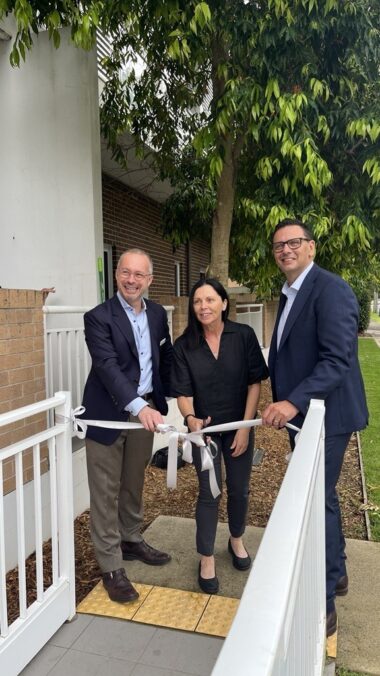New research shows rooftop greenery coverage can help cool down a major city while reducing energy demand.
Extensive greenery coverage on building rooftops could significantly reduce temperatures at the city scale and decrease energy costs, according to a new study.
The research, led by Indira Adilkhanova and Professor Geun Young Yun from Kyung Hee University and co-authored by UNSW Sydney Scientia Professor Mattheos (Mat) Santamouris, found that green roofs could cool South Korea’s capital city by around 1°C during summer and slash the energy demand associated with cooling by almost 8 per cent under maximum coverage.
The study, published in Nature Cities, is the first to analyse the transformative effect of green roofs on urban-scale energy consumption and climate conditions and could provide a template for modelling their potential in other cities worldwide.
“Previously, we have only looked at the energy impact of green roofs for singular buildings, but now this is the first study to evaluate the real climatic and energy impacts of green roofs at the city scale,” says Prof. Santamouris, the Anita Lawrence Chair in High-Performance Architecture at UNSW Arts, Design & Architecture. “Our findings demonstrate the tremendous potential of green roofs to substantially decrease the peak temperature of a city and increase energy savings.”
Prof. Santamouris specialises in developing heat mitigation technologies and strategies to cool cities affected by urban overheating. Seoul, South Korea, is one such city where climate change and rapid urbanisation impact the magnitude of overheating issues, increasing energy consumption needs and adversely affecting health.
“One of the major problems in the built environment worldwide is severe urban overheating,” says Prof. Santamouris. “And as our cities heat up, thermal discomfort and heat-related illness and death also rise.”
Green roofs are a promising strategy for mitigating urban heat and energy consumption. With the ability to be installed on new buildings and retrofitted, they’re a scalable nature-based solution to address the challenges of urban overheating.
Impact of green roofs at the city-scale
For the study, the research team ran large-scale cooling climatic and building energy simulations under three greenery coverage scenarios to evaluate the potential of green roofs to lower the temperature and cooling needs of Seoul during the hottest summer month, August. They specifically focused on non-irrigated extensive green roofs – a type of lightweight green roof with large-scale implementation potential and less maintenance costs.
The modelling found that the higher the coverage of green roof systems, the more significant the decreases in temperatures and energy demand. When 90 per cent of the buildings were covered with green roofs, the city’s air temperature and surface temperature decreased by up to 0.54°C and 2.17 °C, respectively. Meanwhile, building energy use dropped by approximately 7.7 per cent (0.64 kWh/m2).
“Green roofs help cool temperatures by facilitating evaporation through plant transpiration, which cools the surrounding air and reduces the need for mechanical cooling systems (air conditioning), lowering the overall energy demand,” Prof. Santamouris says. “Additionally, the layer of soil and vegetation on green roofs provides insulation, reducing heat transfer into buildings and further lowering energy costs.”
Current green roof coverage in Seoul is modest but is expected to expand to between 30 and 60 per cent based on local policies in the next few decades. But Prof. Santamouris says coverage of 90 per cent – the uppermost potential of green roof concentration – could be achieved with the right incentives.
“Green roofs are one of the more expensive heat mitigation technologies with initial capital costs and ongoing maintenance, so it’s not always suitable,” says Prof. Santamouris. “But for cities and businesses in developed countries that can afford it, green roofs are an important social contribution that policymakers can create the conditions to encourage widespread adoption.”
Prof. Santamouris says the efficacy of green roofs is impacted by meteorological conditions that must be considered in the design and implementation. More detailed analysis is also needed to fully reflect the annual cooling and energy-saving potential of green roof systems over the long term.
“The performance of green roofs is very much affected by several parameters, mainly humidity, precipitation, solar radiation, and temperature,” says Prof. Santamouris. “But green roofs also have important climatic benefits as well as many other important benefits, such as absorbing rainwater, increasing biodiversity and improving the aesthetic quality of the city.”
Prof. Santamouris warns failing to implement urban heat mitigation strategies like green roofs will have severe consequences. On the current trajectory, night temperatures in cities could increase by up to 5°C by 2050. Many people, even those in developed countries, may struggle to afford the costs of electricity for cooling, and heat-related illnesses and deaths will rise significantly.
“There is an urgent need to implement a combination of heat mitigation techniques and technologies in our cities to decrease urban temperatures,” says Prof. Santamouris. “If we do not, the cost in the coming decades will be catastrophic, not just for the economy, but on quality of life, particularly for low-income populations who will suffer the most.”
Contact details:
Ben Knight
UNSW Media & Content
(02) 9065 4915
[email protected]

